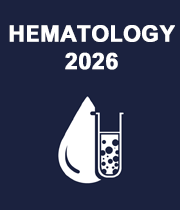Title : Moya moya and sickle cell disease; An amalgamation
Abstract:
Moya moya disease is a chronic cerebral vasculopathy first described in 1957. The disease is named after the appearance of collateral blood vessels that form following the gradual occlusion of arteries of the circle of Willis. The term Moya moya disease (MMD) is used for the disease without any predisposing condition, whereas Moya moya syndrome (MMS) is MMD with a predisposing condition such as sickle cells disease (SCD) or systemic lupus erythematosus. The incidence of this disease is limited and the association with sickle cell disease is fairly uncommon.
We describe a case of a 35-year-old male with a history of sickle cell anemia who presented to the emergency department with right hand and forearm pain for one day. Moreover, he endorsed chest pain which was dull, non-radiating, and not associated with exertion. The patient reported that the pain felt consistent with the sickle cell pain that he always had. He took oxycodone for pain relief before arrival. In the ED, the patient was febrile, and tachycardiac and was de-saturating to 85% on room air. He was diagnosed with acute chest syndrome and sickle cell crisis. Over the course of the hospital stay, he received multiple exchange transfusions. His condition was complicated by seizures and anti-epileptics were started. Further workup was consistent with the internal carotid artery, posterior communicating artery stenosis/occlusion, acute on chronic infarcts in the posterior left parietal lobe, and left the occipital subependymal region with petechial hemorrhage, suspicious for Moya-Moya disease. An angiogram was performed and it confirmed MMS. The patient was taken for left craniotomy for direct STA-MCA bypass. A repeat CT head showed post-surgical changes post left temporal burr hole and left temporal artery bypass, improving pneumocephalus and subdural hyperdense fluid, but no new intracranial hemorrhage, mass effect, or midline shift.
Sickle cell disease has multiorgan involvement. However cardiopulmonary, and cerebrovascular complications have increased morbidity and mortality and the presentation can be variable. The imaging characteristics of MMS in SCD are not well described in the literature. Despite multiple trials, the management of SCD is still evolving. Further research is needed to determine the best treatment for cerebrovascular disease in Moya moya complicated by SCD.
Audience Takeaway:
Sickle cell disease has multiorgan involvement. However, cardiopulmonary and cerebrovascular complications are understudied. We provide a case with literature review of the condition.
- Moya moya syndrome has also been the culprit for recurrent strokes in non–sickle cell patients. However, it is still not certain that there is an increased risk of cerebral infarcts and strokes in the Moya moya pattern with concomitant sickle cell anemia. This research on a rare presentation of the disease is to make physicians more aware of the disease presentation and complications so that they can diagnose and treat it in time.
- This research is to create more awareness amongst physicians and other individuals to keep the neurological manifestations in mind while encountering patients with SCD and Moya moya syndrome.
- Patients with Moya moya collaterals are more prone to developing strokes and TIAS as compared to patients without these collaterals. Despite multiple trials, the management of SCD is still evolving. Further research is needed to determine the best treatment for cerebrovascular disease in Moya moya complicated by SCD. And this case will bring attention to this topic and create awareness so that more trials and research is done to find the potential cure for this disease.



